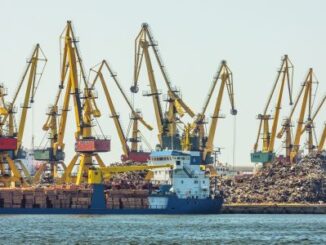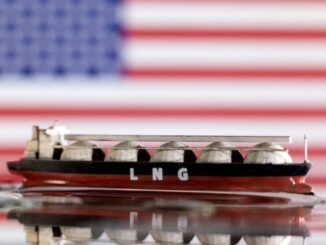
A domestic manufacturing sector will enhance the EU’s long-term energy security.
On Feb. 6, the European Council and European Parliament made a significant agreement in the fight against climate change. The Net-Zero Industry Act (NZIA) establishes a benchmark for the European Union to manufacture 40 percent of expected demand in clean technologies by 2030. As well as onshore and offshore wind, hydro, and geothermal, this figure would include solar. In parallel, the EU’s Solar Energy Strategy aims to scale up generating capacity in solar from 263 gigawatts (GW) today to almost 600 GW by 2030—an increase of more than 140 percent that will make solar the largest source of electricity production in the EU.
At the moment, though, the European solar industry is not on track to reach its contribution to this target. According to the EU Solar Manufacturing Map, Europe only has an annual production capacity of 14.1 GW—amounting to 25 percent of the combined capacity of solar panels installed in 2023.
Meeting the targets of installed solar in Europe is not only crucial to reducing carbon emissions, but also energy costs. From May to August 2022, 12 percent of the EU’s electricity came from solar, helping to avoid a potential 29 billion euros of gas imports—an important factor to consider as European energy markets still suffer from high prices and the disruption caused by Russia’s invasion of Ukraine.
One of the reasons for the critical state of the European solar manufacturing industry is falling prices of Chinese solar panels. These are urgently needed to decarbonize Europe’s energy system. China’s consistent government support, economies of scale, and innovation have enabled its companies to emerge, by a considerable margin, as the world’s largest and cheapest manufacturers of solar panels, which have been dropping in price overall for years. Between 2010 and 2019, the cost of generating electricity from solar photovoltaic (PV) panels fell by 82 percent. By 2020, solar was dubbed the “cheapest electricity in history,” and the cost of producing solar panels in China dropped a further 42 percent from 2022 to 2023.
Fifty-six percent of Chinese solar panel exports went to Europe in 2022, representing 96 percent of European panels. In an era marked by geopolitical uncertainties and shifting energy dynamics, over-reliance on a single external source for solar technology poses risks. A domestic solar manufacturing sector could not only enhance the EU’s long-term energy security, but also mitigate vulnerabilities associated with global supply chain disruptions. There are several options on how to provide a long-term future for a competitive European solar industry. A forward-looking industrial solar policy must go beyond potentially counterproductive protectionist measures and instead focus on fostering innovation, new product development, and local economic opportunities.
The tale of two solar companies, one Switzerland-based and one in China, is instructive as to the different conditions for each market. It did not come as a surprise when, in February of this year, Germany’s leading solar panel producer, Meyer Burger, announced its decision to shutter its Freiberg plant. After years of posting losses—$330 million in 2023 alone—the company decided to prioritize its production facilities in Colorado and Arizona. This move comes as market pressures on subsidized Chinese solar panel imports to Europe intensified.
By contrast, Trina Solar, one of China’s largest manufacturers, reported an operating revenue of 113.5 billion yuan ($15.8 billion) in 2023, up 33.46 percent from 2022. In 2023, China accounted for 81 percent of global solar panel manufacturing. Most of the remaining 19 percent is also located in Asia, including Vietnam, Malaysia, and India. Importantly, China also accounts for shares above 90 percent of the earlier stages of the manufacturing value chain: polysilicon, ingots, wafers, and solar cells. China’s manufacturing capacity for solar was more than double global demand in 2023.
As China increases its already-dominant share of the market, the European solar manufacturing industry has been seeking emergency support from the European Union. A letter to European Commission President Ursula von der Leyen from the European Solar Manufacturing Council (ESMC) in January warned that as much as half of the EU’s operational solar manufacturing capacity could close within weeks. The ESMC asked the EU to immediately take actions to save the sector, including reducing price pressure by buying up excess inventories and further loosening state aid rules. The letter said that if these cannot be implemented, the EU should consider tariffs and quotas on Chinese solar imports.
But that resolution is anything but simple. EU Energy Commissioner Kadri Simson has ruled out trade measures, and there is political opposition to tariffs by member states. German Vice Chancellor Robert Habeck, of the Greens party, has expressed very strong concerns about the imposition of tariffs for solar panels from China because of the impact on prices and potential job losses in the solar installation industry. At the same time, Habeck’s efforts to put in place subsidies for domestic solar manufacturers have been opposed by the FDP, a liberal coalition partner, as it would come at the expense of taxpayers at a time when Germany’s coalition government struggled to approve the 2024 budget.
Trade measures such as tariffs against Chinese solar panels are also strongly opposed by European importers and installers. Their businesses—and many jobs in the European solar industry—rely on imports from China.
European solar manufacturers not only face pressure from the influx of solar panels and components from China, but there is also a pull factor from the United States leading to capital flight. Meyer Burger’s decision to relocate aligns with a broader plan already announced in 2021. These plans became much more concrete in 2023, with the aim to capitalize on the incentives provided by the Inflation Reduction Act in the United States, such as the federal Advanced Manufacturing Production tax credit offered to solar manufacturers. The appeal of the U.S. is further enhanced for European solar manufacturers due to the imposition of a 25 percent tariff on solar PV imports from China. American industry also enjoys cheaper electricity than its European counterparts.
But if the EU wishes to significantly reduce dependency on China, it needs a targeted industrial policy that supports the development of all stages of the solar manufacturing value chain. However, allocating large sums to save European solar PV companies and try to build substantial capacities in the earlier value chain stages would likely be a poor use of public funds and may not make much difference, especially in the near term. Currently, there are only a handful of manufacturers in Europe for these early-stage production processes, which are capital- and energy-intensive.
While the policy priority of the EU should clearly be on facilitating the cost-effective rollout of solar PV and meeting climate targets, EU institutions and member states have a number of options as to how to support domestic solar manufacturers in the short term and create the conditions for long-term competitiveness and sustainability.
The first step in strengthening the European solar industry is that under the new NZIA, at least 30 percent of renewables deployed through auctions must meet mandatory non-price criteria such as qualitative environmental and social parameters, including local “sustainability and resilience contribution.” These non-price criteria have already been adopted in wind power development and should be extended to solar.
Second, member states can invest in new solar manufacturing factories, with approval from Brussels. In early February, Italy announced an investment of nearly 90 million euros to boost production at the Enel 3Sun Gigafactory in the city of Catania. That factory’s innovative concept combines research and cell and panel production. Italian Prime Minister Giorgia Meloni has pledged to boost renewables in the south of the country to try to tackle decades of under-development and has said that Italy both wants and needs to be competitive in solar manufacturing. The Italian government investment follows a 560 million euro financial package from the European Investment Bank (EIB) and a group of Italian banks, agreed in January 2024. While the EIB has financed multiple solar plants, financing solar manufacturing is a new approach.
Third, European support should be targeted at R&D and innovation. The focus could be on the next generation of solar technology such as high-efficiency perovskite solar cells—thin-film devices built with layers of perovskite materials—through targeted and long-term support for the 20-plus solar research and development centers that exist across Europe. Europe is unlikely to be able to compete with the mass production of low-carbon technologies like solar, but it can and should lead on innovation and the next generation of technologies; this is its competitive advantage.
Fourth, renewables in the EU are already producing 44 percent of power, and their total contribution to energy (including transport, industry, and heating) is expected to nearly double by 2030. Europe needs to work hard to develop and manage an energy system that is dominated by renewables, and it has already taken important steps in this direction. Once it has done this, it will be in a good position to export the technology and capabilities that made this happen.
Fifth, it is becoming increasingly necessary to align the solar manufacturing industry with circular economy criteria. The anticipated EU eco-design and energy labeling policy measures for solar PV products will set the minimum standards for circularity, energy performance, and environmental sustainability for solar products being placed onto the European market. Measures and product standards that incentivize the adoption of sustainable practices in product design, manufacturing, and enabling recycling of solar components will foster long-term industry sustainability and competitiveness.
Finally, the European Commission is working on a ban on products produced with forced labor. On March 5, 2024, negotiators from the European Parliament and European Council reached a provisional agreement. As silicon from Xinjiang would fall under this policy, it could become a non-tariff trade measure that potentially limits the import of solar panels from China. EU countries and companies will have three years to start applying the new rules. Companies importing solar from China will need to improve their supply chain due diligence programs. While the ban would not have an immediate impact, it would help in improving traceability in the solar supply chain and improve human rights and sustainability standards.
Anything that results in increasing the cost of solar panels in Europe and by extension slowing deployment—whether as a result of protectionist policies, trade disputes, forced labor bans, or local content requirements—comes with several risks. How the European Commission will decide on Chinese solar panels coming into Europe is not yet clear, but there is likely to be support for European companies. In fact, there are indications that the EU will expect member states to take action through a joint declaration and state aid measures.
The International Energy Agency estimates that a panel fully produced in Europe from start to finish would be 140 percent more expensive than a Chinese equivalent in 2028. It follows that the bloc’s ambitious decarbonization targets will become more costly and challenging to meet, and that could prolong reliance on imported fossil fuels for power generation. But while concentration of solar production in China is likely to persist for the foreseeable future, and Europe will depend on imports of Chinese solar to meet its climate targets, EU governments can provide the right conditions and support policies to ensure the revival of a competitive and innovative solar manufacturing industry.



